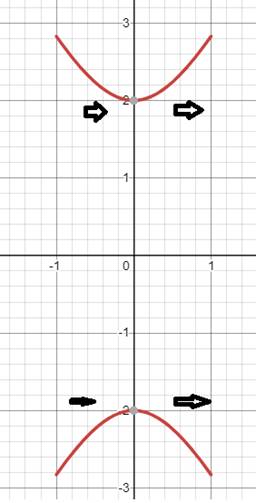
Concept explainers
(a)
To find: The sketch for the curve over the given
(a)
Answer to Problem 20E
The required sketch is shown in Figure 1
Explanation of Solution
Given Data:
The given equations are,
Calculation:
Consider the trigonometric equation as,
Substitute the values in the given equation then,
The sketch for the above function is shown in Figure 1

Figure 1
(b)
To find: The identification for the requested points.
(b)
Answer to Problem 20E
The lowest point on the graph is
Explanation of Solution
Consider the graph is shown in Figure 1 the graph shows that the lowest point is
(c)
To find: The justification that you have found the requested point by analysing an appropriate derivative.
(c)
Answer to Problem 20E
The lowest point on the graph is
Explanation of Solution
To obtain the lowest point on the graph differentiate the given equation as,
Then,
Then, the value of
Thus, lowest point on the graph is
Chapter 11 Solutions
Calculus 2012 Student Edition (by Finney/Demana/Waits/Kennedy)
Additional Math Textbook Solutions
Elementary Statistics: Picturing the World (7th Edition)
Precalculus
A Problem Solving Approach To Mathematics For Elementary School Teachers (13th Edition)
Elementary Statistics
A First Course in Probability (10th Edition)
Calculus for Business, Economics, Life Sciences, and Social Sciences (14th Edition)
- For the system consisting of the lines: and 71 = (-8,5,6) + t(4, −5,3) 72 = (0, −24,9) + u(−1, 6, −3) a) State whether the two lines are parallel or not and justify your answer. b) Find the point of intersection, if possible, and classify the system based on the number of points of intersection and how the lines are related. Show a complete solution process.arrow_forward3. [-/2 Points] DETAILS MY NOTES SESSCALCET2 7.4.013. Find the exact length of the curve. y = In(sec x), 0 ≤ x ≤ π/4arrow_forwardH.w WI M Wz A Sindax Sind dy max Утах at 0.75m from A w=6KN/M L=2 W2=9 KN/m P= 10 KN B Make the solution handwritten and not artificial intelligence because I will give a bad rating if you solve it with artificial intelligencearrow_forward
- Solve by DrWz WI P L B dy Sind Ⓡ de max ⑦Ymax dx Solve by Dr ③Yat 0.75m from A w=6KN/M L=2 W2=9 kN/m P= 10 KN Solve By Drarrow_forwardHow to find the radius of convergence for the series in the image below? I'm stuck on how to isolate the x in the interval of convergence.arrow_forwardDetermine the exact signed area between the curve g(x): x-axis on the interval [0,1]. = tan2/5 secx dx andarrow_forward
 Calculus: Early TranscendentalsCalculusISBN:9781285741550Author:James StewartPublisher:Cengage Learning
Calculus: Early TranscendentalsCalculusISBN:9781285741550Author:James StewartPublisher:Cengage Learning Thomas' Calculus (14th Edition)CalculusISBN:9780134438986Author:Joel R. Hass, Christopher E. Heil, Maurice D. WeirPublisher:PEARSON
Thomas' Calculus (14th Edition)CalculusISBN:9780134438986Author:Joel R. Hass, Christopher E. Heil, Maurice D. WeirPublisher:PEARSON Calculus: Early Transcendentals (3rd Edition)CalculusISBN:9780134763644Author:William L. Briggs, Lyle Cochran, Bernard Gillett, Eric SchulzPublisher:PEARSON
Calculus: Early Transcendentals (3rd Edition)CalculusISBN:9780134763644Author:William L. Briggs, Lyle Cochran, Bernard Gillett, Eric SchulzPublisher:PEARSON Calculus: Early TranscendentalsCalculusISBN:9781319050740Author:Jon Rogawski, Colin Adams, Robert FranzosaPublisher:W. H. Freeman
Calculus: Early TranscendentalsCalculusISBN:9781319050740Author:Jon Rogawski, Colin Adams, Robert FranzosaPublisher:W. H. Freeman
 Calculus: Early Transcendental FunctionsCalculusISBN:9781337552516Author:Ron Larson, Bruce H. EdwardsPublisher:Cengage Learning
Calculus: Early Transcendental FunctionsCalculusISBN:9781337552516Author:Ron Larson, Bruce H. EdwardsPublisher:Cengage Learning





